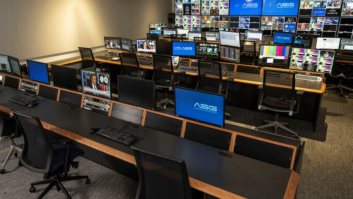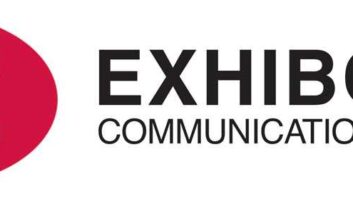
The vice president of mounting and display solutions manufacturer Milestone and ISE Advisory Board member talks to James McGrath about industry-leading technology and success on a global scale.
How did you first come to be involved in the AV industry?
There are definitely roots in the fact I’ve been a musician all my life – I started out as a recording engineer in university. For eight years after university I worked as a light and sound engineer and producer; I even worked with a few big artists such as Prince and George Courtney along the way.
Then I decided it was time for a change – I wanted to see a little more sunshine than most sound engineers normally do! So I started working for Electrosonic, an audiovisual company that has offices in Minnesota and California and headquarters in the UK. I was there for four years and held a number of different roles that involved installation work, videowall programming, training and tradeshows. I then went off to graduate school, got an MBA and moved on to AMX holding a position there for 11-and a-half years before moving to Milestone in January of last year.
How does working with Milestone compare with working for AMX?
As you probably already know they’re both a part of Duchossois holding company, and both are fantastic brands involved in industry-leading technology. But while the products are very different, the core values, approach to the customer and drive to be the leader in terms of technology are very much the same.
My role at AMX was international and so is the role I currently have at Milestone, so overall it was a relatively easy transition from one company to the other.
To what extent and how does Milestone compete with low-cost low-value manufacturers?
We tend to be industry leaders, and often come up against what we call ‘fast-followers’. So while we do compete with those types of manufacturers, we are a premium brand, building technology into our products that commands a premium price. We work diligently to make sure the customer experience of all our products is very different than some of the low-cost producers. So, yes, I do think we compete against them, but when you look at the market as a whole, it’s obvious to see where industry leaders are competing on a different level to low-cost low-technology producers.
We’re doing a great deal to ensure our products maintain quality and value, and we’re experiencing success on a global scale even in less developed countries. The business is growing: we’re getting new integrators all the time and we’re adding additional retail partners. There are definitely more competitors out there for us, but we’re still continuing to build on our success in the space we’ve always been.
How significant do you think the synergies are between Chief and Sanus?
They are both strong brands individually, aimed at different segments of the market. Chief is really focused on the custom and commercial install markets, while Sanus is a consumer brand. We have engineers working on each separate brand, but they’re part of the same company so they’re constantly sharing information. The same can be said for the sales side of operations; all our commercial sales personnel know all of our consumer sales personnel and they’re exchanging information and opportunities all the time. Obviously the two different brands are their core job, but sharing ideas and sharing experiences develops both brands individually.
Do you see the racking/mounting markets becoming more or less commoditised?
I don’t think it’s a question of more or less commoditisation. Instead, I think we’re going to see the gap increase between companies that are driving innovation and adding value to the customer experience and those companies that are merely trying to imitate others’ technology and manufacture the lowest possible product at the lowest possible price.
Consumers’ expectations are that technology will continue to innovate and continue to develop, and the design aesthetics for the products we produce are always improving because customers are demanding that products look better. Relating back to my earlier answer, the high and low end of the markets are definitely moving away from each other – but that’s happening in a lot of industries at the moment: there are people who will pay whatever price Apple is asking for an iPhone because they want that technology, yet some people are only willing to pay for the least expensive phone because for them it’s more of a tool than a technology-driven purchase.
Are you optimistic that ISE will continue on its growth path?
I believe the ISE show is just the right combination of the commercial and custom install segments of the industry. The commercial segment of the market will continue to bring in the new exhibitors and new speakers in what I would call the developing parts of the industry – digital signage being one of those parts. We will continue to see more attendees from an even broader range of countries and the show will continue to attract manufacturers from around the world.
What do you think the main reasons are for the success of ISE?
From a manufacturer’s perspective, the show offers a great opportunity; people arrive from all over the world, and so as a global manufacturer in our industry I think it’s the best show to attract the greatest variety of people from different countries. As I mentioned before, ISE is continuing to look for emerging segments in the AV industry and it’s creating opportunities for manufacturers and attendees who come to the show. The show continues to innovate in that way and I think that’s very good. Overall ISE has a very strong brand, as well as very well done tradeshow marketing both for exhibitors and attendees. From a tradeshow experience – and I’ve been to a lot of them – ISE is still the best tradeshow I attend each year.
Does your position on the Advisory Board of ISE help with your current role?
It does in the sense that the board is really focused on the show, so any time you have the chance to see how something is becoming successful – as ISE did and continues to be – you can always take some of those elements and apply them to certain parts of your own business. It was a great opportunity to be on the advisory board – it’s an opportunity to learn and you should always take advantage of those opportunities.
What are your plans for 2012?
Growth will feature heavily in our plans as a company in 2012. We will continue to expand our international presence by looking for new integrators and distribution partners from around the world to support this activity. Milestone acquired the Da-Lite company last year and with that came not only the Da-Lite brand, but also Projecta and Procolor, both of which are manufactured in Europe. We’re continuing to bring the Milestone and Da-Lite teams more closely together working on things from a sales perspective; we’re also starting to talk about some clever new product ideas that will take advantage of both of our technologies. I think it’s going to be an exciting year.







